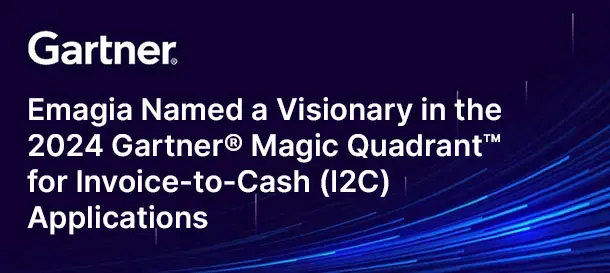The Challenge of Manual Accounts Receivable
For decades, the lifeblood of business has flowed through a system built on manual processes. Invoicing, payment collection, and cash application have traditionally been cumbersome, time-consuming tasks handled with spreadsheets, printed invoices, and endless follow-up emails. This manual approach to accounts receivable is not just inefficient; it’s a significant drain on resources and a bottleneck for cash flow. Finance teams are often buried in repetitive, low-value administrative work, leaving little time for strategic analysis or proactive problem-solving.
This reliance on human intervention creates a fertile ground for errors, from simple data entry mistakes to misapplied payments, all of which can lead to payment delays and strained customer relationships. The sheer volume of transactions for a growing business can quickly overwhelm a manual system, leading to a high days sales outstanding (DSO) and a negative impact on overall financial health. The process of chasing overdue invoices, a dreaded task for many, further highlights the need for a more modern, streamlined solution. This is where the concept of automation accounts receivables enters the picture, promising a way to break free from these traditional constraints and unlock a more efficient, profitable future.
What is Accounts Receivable Automation?
At its core, accounts receivable automation is the application of technology to streamline and optimize the entire credit-to-cash lifecycle. It is the digital transformation of your AR process, moving away from manual, paper-based operations toward a seamless, integrated, and intelligent system. Think of it as a smart assistant for your finance department, one that handles the routine, repetitive tasks so your team can focus on what truly matters. An automated accounts receivable system uses software to manage everything from generating and sending invoices to tracking outstanding payments, managing collections, and reconciling incoming cash.
This process is about more than just speeding things up; it’s about introducing a new level of accuracy, visibility, and control over your company’s revenue stream. The goal of ar automation is to reduce the time it takes to get paid, improve cash flow, and ultimately enhance the financial stability of your business. By leveraging technologies like artificial intelligence (AI) and robotic process automation (RPA), these platforms can handle a vast number of transactions with minimal human oversight, ensuring consistency and precision in every step.
Breaking Down the Concept of Automation Accounts Receivables
The core idea behind automation in accounts receivable is to create a frictionless flow of information. It involves integrating various financial systems, such as your ERP and CRM, to automatically pull data for invoice creation. This eliminates the need for manual data entry, a major source of errors. When a sale is made, the system can instantly generate a professional, accurate invoice and send it to the customer via their preferred channel, whether that’s email or a dedicated self-service portal. The system doesn’t stop there; it continuously monitors the invoice’s status and can be configured to send automated, polite reminders before and after the due date. This proactive approach to collections significantly reduces the time invoices spend unpaid.
When a payment is received, the automated accounts receivable software uses intelligent matching rules to instantly apply the cash to the correct invoice, a process known as cash application. This removes one of the most tedious and error-prone tasks in the AR department. Finally, these systems provide real-time dashboards and reports, giving finance leaders an up-to-the-minute view of their financial position, allowing for more informed and strategic decision-making. In essence, it takes a complex, multi-step process and turns it into a smooth, automated workflow, allowing businesses to operate with greater agility and efficiency.
Core Functions of AR Automation Software
A robust accounts receivable automation platform is more than just a single tool; it is a suite of interconnected features designed to manage the entire invoice-to-cash cycle. The power of these systems lies in their ability to handle a wide range of tasks with a high degree of intelligence and precision. From the initial point of sale to the final cash application, these tools work together to create a streamlined process that maximizes efficiency and minimizes risk. The following sections detail the key functions that define a comprehensive ar automation solution.
Automated Invoicing and Billing
Manual invoicing is often a bottleneck in the AR process. Automation addresses this directly by integrating with your existing systems to automatically generate and send invoices. This functionality ensures that invoices are created the moment a product is shipped or a service is completed. The software can use templates to maintain brand consistency and can automatically apply discounts, taxes, and other crucial details. By removing the need for human intervention in invoice generation, businesses can ensure greater accuracy and faster delivery, which in turn leads to quicker payments. The system can also be configured for recurring billing, making it an ideal automated accounts receivable system for businesses with subscription models or retainer agreements.
Intelligent Payment Reminders and Collections Management
One of the most time-consuming and often uncomfortable aspects of the AR process is collections. An ar management software automates this by creating and executing a sophisticated collections workflow. It can automatically send personalized email reminders to customers before an invoice is due, on the due date, and at various intervals after. This proactive communication reduces late payments without requiring constant manual effort from your team.
Advanced platforms can even use predictive analytics to identify customers who are likely to be late payers, allowing your team to focus their personal outreach on high-risk accounts. This targeted approach is a far cry from the “one-size-fits-all” method of manual collections and is a key benefit of modern ar automation tools.
Seamless Cash Application and Reconciliation
After a payment is received, the process of matching it to the correct invoice is called cash application. This is another area where manual processes are prone to error and significant delays. An accounts receivable application automates this by using AI and machine learning to match incoming payments to open invoices, even when there is missing or incomplete remittance data. It can handle various payment types, from credit cards and ACH transfers to checks.
Once the payment is matched, the system automatically updates the ledger and reconciles the account, ensuring that your financial records are always accurate and up-to-date. This eliminates the need for manual data entry and frees up your finance team to handle exceptions or more complex financial tasks. The accuracy and speed of this function are a cornerstone of any effective accounts recievable automation platform.
Advanced Reporting and Analytics
One of the most powerful features of modern accounts receivable automation solutions is the ability to provide real-time insights into your financial data. These platforms offer intuitive dashboards that track key performance indicators (KPIs) like Days Sales Outstanding (DSO), average days delinquent (ADD), and the receivables turnover ratio. This high-level visibility allows finance leaders to monitor the health of their AR process at a glance and identify potential issues before they become critical.
With this data, you can make more informed decisions about credit policies, collections strategies, and overall business operations. Predictive analytics, a feature powered by ai accounts receivable tools, can even forecast payment behaviors, allowing you to proactively manage your cash flow and reduce the risk of bad debt.
Why Your Business Needs It: Unlocking the Benefits of AR Automation
The transition from a manual to an automated accounts receivable process is not just about adopting new technology; it’s about fundamentally changing how your business operates. The benefits of this transformation are far-reaching, impacting everything from your bottom line to your customer relationships. Here, we delve into the most significant advantages that make accounts receivable automation an essential investment for any modern business.
Accelerated Cash Flow and Reduced DSO
For any business, cash flow is king. The faster you can convert invoices into cash, the healthier your business becomes. By streamlining invoicing and collections, an ar automation platform directly contributes to a significant reduction in your Days Sales Outstanding. Faster invoice delivery, coupled with automated reminders, means customers are prompted to pay on time, reducing the number of overdue accounts. This accelerated payment cycle gives you quicker access to working capital, allowing you to invest in growth, pay suppliers, and manage your financial obligations with greater ease. The difference between a 45-day DSO and a 25-day DSO can be a game-changer for your business’s liquidity and stability.
Improved Operational Efficiency and Productivity
Manual AR processes are a major drain on time and resources. Employees spend countless hours on tasks that are repetitive and prone to error: data entry, printing and mailing invoices, sending follow-up emails, and manually reconciling payments. By automating these tasks, you free up your finance team to focus on more strategic, high-value activities.
Instead of chasing payments, they can be analyzing customer credit risk, resolving complex disputes, or working on cash flow forecasting. This shift in focus not only improves employee morale but also allows your team to contribute more meaningfully to the company’s long-term success. It’s a move from being reactive to proactive, and it’s one of the key selling points for automated accounts receivable processing.
Enhanced Accuracy and Compliance
Human error is an inevitable part of any manual process. A single typo in an invoice can lead to a payment delay and a customer dispute. Automation eliminates this risk by ensuring that data is pulled directly from source systems and processed according to a consistent set of rules. This leads to a dramatic improvement in accuracy, reducing the number of errors and the time spent correcting them.
Furthermore, automation of accounts receivable helps businesses maintain a clear, auditable trail of all transactions. This enhanced visibility and consistency are crucial for meeting regulatory compliance standards and for simplifying the auditing process. With an automated system, you can be confident that your financial records are both accurate and secure.
Stronger Customer Relationships
While some may think automation removes the “human touch,” a well-implemented receivables automation solution actually enhances customer relationships. By ensuring that invoices are always accurate and sent on time, you create a professional and reliable billing experience. Automated, yet personalized, payment reminders are far less likely to be perceived as aggressive compared to a manual phone call.
Additionally, many AR platforms offer customer self-service portals where clients can view their invoices, check their payment history, and make payments with ease. This level of convenience and transparency builds trust and strengthens customer loyalty. By making the payment process seamless, you reduce the friction that can often lead to disputes and dissatisfaction.
Better Financial Visibility and Strategic Decision-Making
In a manual system, financial data is often outdated and fragmented, making it difficult to get a true picture of your company’s financial health. An accounts receivable automation platform provides a centralized source of truth. With real-time dashboards and robust reporting features, you can instantly see which invoices are outstanding, who your high-risk customers are, and what your cash flow forecast looks like.
This unparalleled level of visibility empowers finance leaders to make data-driven decisions. Whether it’s adjusting credit terms for certain customers, identifying new opportunities for growth, or forecasting future capital needs, the insights gained from an automated system are invaluable. This is the difference between flying blind and having a clear, comprehensive view of your financial landscape.
Implementing Accounts Receivable Automation: A Step-by-Step Guide
The prospect of transitioning to an ar automation system can seem daunting, but with a structured approach, it can be a smooth and highly rewarding process. Implementing a new system is a strategic project that requires careful planning, stakeholder buy-in, and a clear understanding of your business needs. This section will guide you through the key steps to successfully automate your accounts receivable process.
Phase 1: Assessing Your Current Process and Goals
Before you can automate, you must first understand what you’re automating. Begin by mapping out your existing manual AR workflow from start to finish. Identify all the touchpoints, from how an invoice is created to how a payment is reconciled. Look for bottlenecks, pain points, and areas where errors are most common. This is also the time to define your goals.
What do you hope to achieve with automation? Is it to reduce DSO by 20%? Cut administrative costs by 30%? Or simply free up your team for more strategic work? Having clear, measurable objectives will guide your decision-making and help you evaluate the success of your implementation. Engage your entire finance team in this process; their insights are invaluable for identifying the challenges they face daily.
Phase 2: Researching and Selecting the Right Accounts Receivable Automation Software
The market for ar automation solutions is vast, and finding the right fit for your business requires diligent research. Look for software that aligns with the goals you’ve defined in the first phase. Consider factors such as its integration capabilities with your existing ERP or accounting system, the scalability of the platform to grow with your business, and the ease of use for your team. Prioritize platforms that offer robust features like automated invoicing, intelligent collections workflows, and seamless cash application. Don’t be afraid to ask for demos and free trials to see the software in action and get a feel for its user interface. The perfect accounts receivable automation platform for a small business may be different from the needs of a large enterprise, so make sure to choose a solution that is tailored to your specific size and industry.
Phase 3: Implementation and Integration
Once you’ve selected a platform, the implementation phase begins. This involves integrating the new software with your existing systems and configuring the workflows to match your business processes. It’s crucial to have a dedicated project team to oversee this process. Work closely with the vendor’s support team to ensure a smooth transition and to avoid any data migration issues.
This is also the time to set up your automation rules, such as when payment reminders should be sent or what your dunning process will look like. A critical part of this phase is training your team. Ensure everyone understands how to use the new system and is comfortable with the changes. Change management is a key element of a successful implementation, so communicate the benefits of the new system and address any concerns your team may have.
Phase 4: Launch, Monitoring, and Optimization
After a successful integration and training period, it’s time to launch the new automated system. Start with a pilot group or a specific set of clients to test the workflow before a full rollout. Once live, continuously monitor your progress against the KPIs you established in the first phase. Are you meeting your DSO goals? Have administrative costs decreased? Gather feedback from your team and customers to identify any areas for improvement.
An ar automation platform is not a “set it and forget it” solution; it’s a dynamic tool that should be regularly optimized. Use the data and insights provided by the software to refine your collections strategies, adjust your credit policies, and further streamline your processes for maximum efficiency. This ongoing cycle of monitoring and optimization ensures you are getting the most value out of your investment.
Choosing the Right Accounts Receivable Automation Software
With so many options available, selecting the ideal accounts receivable automation software can be a challenge. The right choice will depend on a variety of factors unique to your business. A thoughtful, methodical approach to the selection process will ensure you find a solution that not only meets your current needs but can also scale with you as your business grows. Here’s a breakdown of what to look for when making this critical decision.
Functionality and Features
The first and most obvious consideration is the functionality of the software. Does it offer a comprehensive suite of tools that cover your entire AR workflow? Look for platforms that include automated invoicing, intelligent collections management, and seamless cash application. Consider if the software includes advanced features like predictive analytics and a customer self-service portal. The more tasks you can automate within a single platform, the greater the efficiency gains will be. A good ar automation platform should be able to handle a variety of payment methods and support your specific business model, whether you bill monthly, quarterly, or on a project-by-project basis.
Integration Capabilities
A new AR system should not operate in a vacuum. It must seamlessly integrate with your existing technology stack, including your ERP, accounting software (like QuickBooks or NetSuite), and CRM. This integration is crucial for ensuring a smooth flow of data and for creating a single source of truth for your financial information. Without proper integration, you’ll still be spending time on manual data transfers, which defeats the purpose of automation. Ask potential vendors about their integration partners and capabilities. The more flexible and open the platform, the better it will be for your business in the long run. Look for a solution that can be the hub of your financial operations, not just another siloed tool.
Scalability and Support
As your business grows, your accounts receivable process will become more complex. The software you choose today must be able to handle that growth tomorrow. Ask vendors about their platform’s scalability. Can it handle an increasing volume of invoices and customers without a decline in performance? What about multi-currency or multi-entity support if you plan to expand globally? Beyond the technology itself, consider the level of support the vendor offers. What kind of onboarding, training, and ongoing technical support do they provide? A reliable partner will be there to assist you not just during implementation, but as you continue to use and optimize the software. This partnership is a critical part of the long-term success of your account receivable automation journey.
Accounts Receivable Automation Best Practices
Implementing an automated accounts receivable software is just the first step. To truly unlock its full potential, businesses must adopt a mindset of continuous improvement and strategic application. Following these best practices will ensure that your automation efforts lead to maximum efficiency, enhanced cash flow, and a stronger financial position.
Define Clear Credit and Payment Policies
Automation is only as good as the rules you set for it. Before you even begin the automation process, it’s essential to have a clear, well-documented credit and payment policy. This policy should outline your payment terms, late fees, and collections process. With this foundation in place, you can configure your automation tools to enforce these policies consistently and fairly. For example, your software can be programmed to send a late payment reminder exactly seven days after an invoice is due, automatically applying a late fee as per your policy. This consistency reduces disputes and ensures that your collections process is both predictable and effective. This is a core component of any strong accounts receivable process automation strategy.
Leverage Data and Analytics for Continuous Improvement
The real-time data provided by your automated ar system is one of its most valuable assets. Don’t let it go to waste. Regularly analyze your KPIs to identify trends and opportunities. Are certain customers consistently paying late? Is your DSO trending upward? The data can provide the answers you need to refine your strategies. For example, if you notice a specific segment of your customers consistently requires a reminder two weeks before their due date, you can adjust your automation rules to accommodate this behavior. By using data to inform your decisions, you move from a reactive to a proactive approach, constantly optimizing your process for better results. This intelligent use of data is a hallmark of a mature ar automation platform.
Provide a Great Customer Experience
While automation handles the routine tasks, the human element remains crucial for building strong customer relationships. Use the time freed up by automation to focus on resolving disputes, addressing complex customer inquiries, and providing exceptional service. The self-service portals and automated communications should be seen as a way to make your customers’ lives easier, not as a replacement for personal interaction. A customer who has a positive experience with your billing and payment process is a customer who is more likely to pay on time and remain loyal. The best accounts receivable automation benefits are often realized when a business strikes the right balance between automation and personalized service. It’s about leveraging technology to enable better human interaction, not to replace it entirely.
Unlocking Unprecedented Efficiency: How Emagia Empowers Your Financial Operations
In the complex world of modern finance, the right technological partner can make all the difference. Emagia is a leader in the financial technology space, offering a powerful and comprehensive suite of tools designed to revolutionize the way businesses manage their accounts receivable. The platform goes beyond simple automation, leveraging artificial intelligence and machine learning to deliver a truly intelligent and transformative experience. Emagia’s solutions are built to tackle the most significant challenges in the credit-to-cash cycle, from slow cash application to inefficient collections processes, all while providing unprecedented visibility and control. By choosing a partner like Emagia, companies can not only streamline their operations but also gain a strategic advantage in a competitive market.
The platform’s ability to automate complex tasks, predict payment behaviors, and provide real-time insights makes it a crucial asset for any business serious about optimizing its financial health and accelerating growth. Emagia helps businesses move beyond the limitations of traditional, manual processes and embrace a smarter, more efficient future for their accounts receivable management.
Frequently Asked Questions about AR Automation
What are the main goals of accounts receivable automation?
The primary goals of accounts receivable automation are to accelerate the cash application process, reduce Days Sales Outstanding (DSO), improve operational efficiency, minimize human error, and enhance overall cash flow management. It aims to transform manual, time-consuming tasks into streamlined, automated workflows.
How does accounts receivable automation help reduce DSO?
Accounts receivable automation reduces DSO by speeding up every stage of the invoice-to-cash cycle. It ensures timely and accurate invoice delivery, automates payment reminders and follow-ups, and facilitates faster cash application, all of which contribute to quicker payments and a shorter average collection period.
What is the difference between accounts receivable automation and accounts receivable software?
Accounts receivable software is a broad term for any tool that helps manage the AR process. Accounts receivable automation specifically refers to software that uses rules-based logic, artificial intelligence, and machine learning to perform tasks automatically without human intervention, such as sending invoices or applying cash.
Can accounts receivable automation work with my existing ERP system?
Yes, most modern accounts receivable automation platforms are designed to integrate seamlessly with a wide variety of existing ERP, CRM, and accounting systems (e.g., NetSuite, QuickBooks, SAP). This integration is crucial for ensuring a smooth flow of data and a centralized source of truth.
Is accounts receivable automation only for large enterprises?
Not at all. While large enterprises benefit significantly from automation, small and medium-sized businesses can also reap huge rewards. AR automation solutions are available for businesses of all sizes, helping them to professionalize their billing, improve cash flow, and free up valuable time for their small teams.
What is robotic process automation (RPA) in the context of accounts receivable?
Robotic process automation in accounts receivable refers to the use of software bots to handle repetitive, rule-based tasks that were traditionally performed by humans. This can include tasks like data entry, matching payments to invoices, and sending routine follow-up emails, all of which are a part of a comprehensive ar automation solution.
How does AI fit into accounts receivable automation?
AI tools for accounts receivable are used for more intelligent, predictive tasks. This includes using machine learning to predict which customers are likely to pay late, automating complex cash application with incomplete data, and providing deep analytics and insights to inform strategic decisions. AI elevates simple automation to an intelligent, proactive process.



